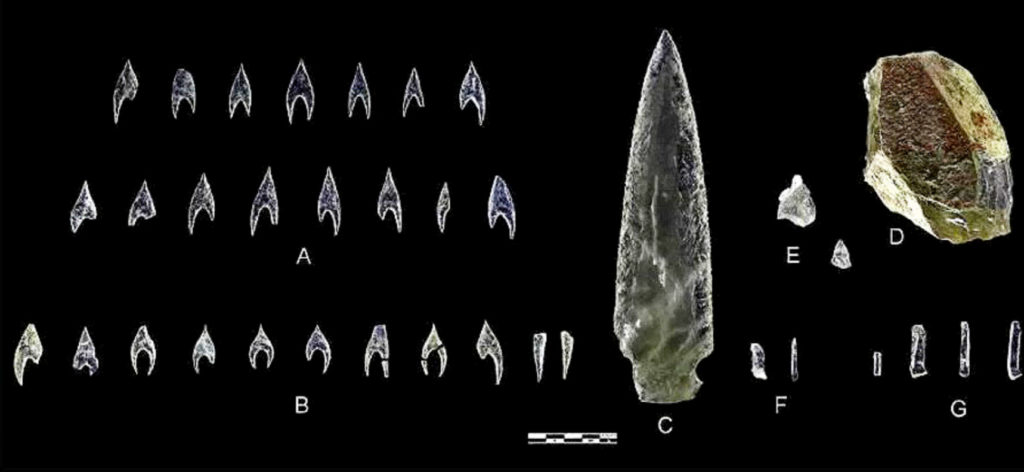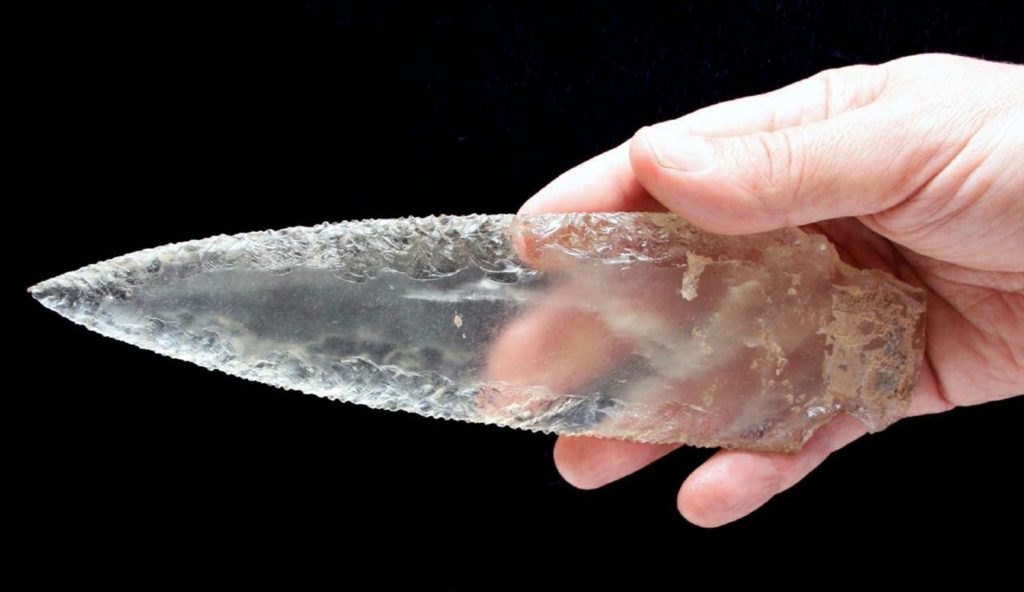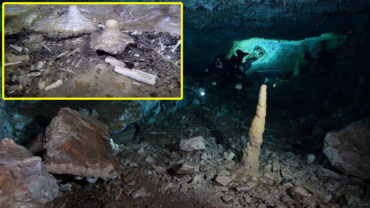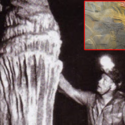5,000-Year-Old Crystal Dagger Found In A Iberian Secret Prehistoric Tomb
Throughout history, archaeologists have uncovered countless tools from early civilizations. The majority are made of stone, but a group of Spanish experts discovered incredible rock crystal weaponry. One of the most spectacular crystal daggers, dating back to at least 3,000 BC, demonstrates the extraordinary ability of the sculptor.
The incredible find occurred at the Montelirio tholos, a megalithic tomb in southern Spain. This gigantic site, which spans 50 meters, is made up of massive slate slabs. The place was excavated between 2007 and 2010. Scholars from the University of Granada, Seville, and the Spanish Higher Council for Scientific Research published a report on glass tools five years later. Along with the dagger, they discovered 25 arrowheads and blades.

According to the study, rock crystal is expected in late prehistoric Iberian sites, but it is rarely studied in depth. To fully appreciate the function of these one-of-a-kind weapons, we must first consider the circumstances surrounding their discovery.
The bones of at least 25 persons were uncovered within the Montelirio tholos. According to prior investigations, poisoning claimed the lives of at least one man and many women. In a room near the bones of the group’s possible leader, the women’s remains were placed in a circular arrangement.
Many funeral objects, such as “shrouds or garments fashioned from tens of thousands of beads perforated and embellished with amber beads,” ivory artifacts, and gold leaf pieces, were discovered in the tombs. Experts believe the crystal arrowheads may have been part of a ritual offering because they were found together. Elephant tusks, jewelry, cutlery, and an ostrich egg were also recovered in a burial trousseau.
Is that a sacred dagger?

What about the dagger made of crystal? It was recovered alone in a different compartment, “together with an ivory hilt and scabbard.” The 8.5-inch long blade is designed like other daggers from the time era (the difference, of course, is that those daggers were made of flint, and this one is glass).
Experts believe the gem would have had excellent symbolic meaning at the time. High society members utilized this stone to gain strength or, according to tradition, magical abilities. As a result, this crystal blade might have been employed in various ceremonies. This weapon’s wrist is ivory. Experts say this adds to the evidence that the crystal dagger belonged to the governing class of the time.
Exceptional craftsmanship
This glass dredger’s polishing indicates that experienced workers made it. It is thought to be the “most technically advanced” artifact ever discovered in Iberia’s history, and carving it would have required a considerable deal of skill.

According to specialists, the crystal dagger was made from a single block of glass measuring 20 cm long and 5 cm thick. The 16 arrowheads were carved using pressure carving, which entails removing the thin scales along the stone’s edge. Although the crystal items resemble flint arrowheads, researchers say that forging such crystal things requires more excellent skill.
Glass weapons have a particular connotation
Because there were no crystal mines nearby, the ingredients for these constructions had to be sourced from afar. This supports the hypothesis that they were created for a privileged few who could afford to collect and turn such materials into weapons. It’s also worth noting that none of the guns belong to a single individual; rather, everything indicates that they were designed for group use.
“They depict burial apparel that was solely accessible to the elite of this historical period,” the researchers add. “On the other hand, the rock crystal had a symbolic purpose as a raw material with certain meanings and consequences.” According to the literature, there are societies where rock crystals and quartz are used as raw materials to symbolize life, magical skills, and ancestors’ connection.
Although we don’t know for sure what these weapons were used for, their discovery and investigation offer a fascinating peek into the prehistoric tribes that lived on the planet more than 5,000 years ago.



